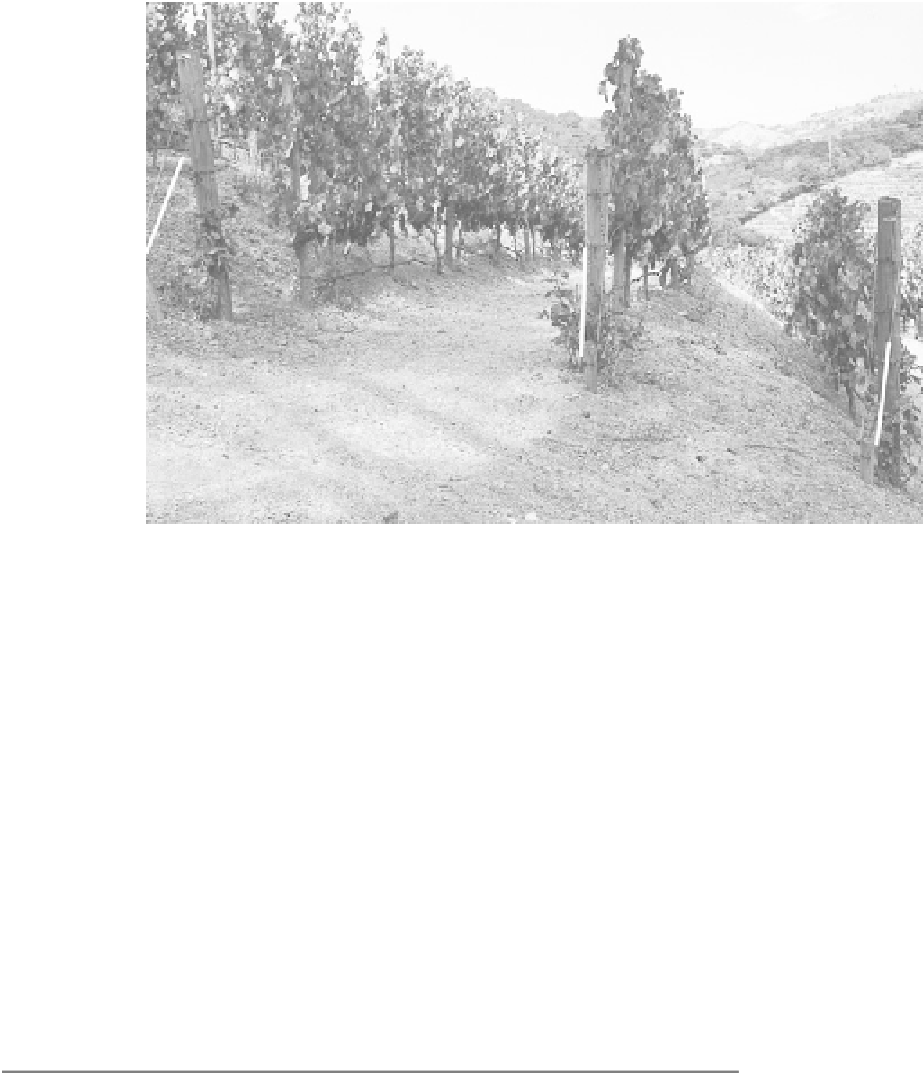Agriculture Reference
In-Depth Information
Figure 7.16
Terraced vineyards at Pine Ridge in the Napa Valley, California. Photograph by the
author. See color insert.
are planted across the slope, the erosion can be further reduced by the use of con-
tour ridges or banks. These structures are designed to reduce the length of slope
from which runoff is generated, and hold water on the slope longer, so that as
much water as possible enters the soil. On low to moderately steep slopes, surplus
water from contour banks or terraces can be carried away by a grassed waterway,
but stone or concrete-lined drains should be used on the steepest slopes.
Crop Management C
. Practices aimed at reducing
C
must focus on not leav-
ing the soil bare when rainfall erosivity is high. The most effective practice is to
use in-row mulches and to grow a healthy cover crop, so that the soil surface is
protected and soil binding by the plant roots is strong.
The Fate of Applied Chemicals, Wastes, and Nutrients
7.6
Increasingly, there are concerns about the off-site impacts of vineyard chemicals,
waste from wineries, and nutrient losses, especially of N and P, on surface water
and groundwater quality. The key to minimizing off-site impacts is a vineyard
management plan based on an informed choice of practices and good record keep-
ing. This is the basis of an
Environmental Management System
(
EMS
), which should
cover both the production and environmental aspects of viticulture.
Pesticides, Fungicides, and Herbicides
Many synthetic organic chemicals intended to kill a “target” organism are used as
pesticides and herbicides, and to a lesser extent as fungicides. The
environmental
impact
of such a chemical depends on its effect on nontarget organisms—benefi-
7.6.1

